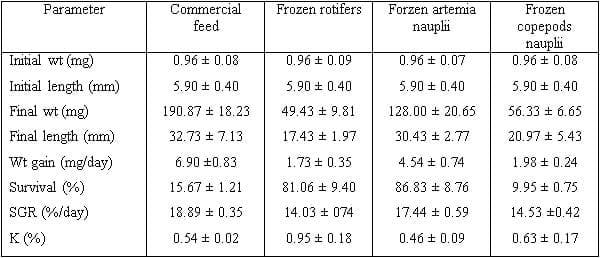Introduction
Among the many species of the genus Clarias, only Clarias gariepinus is recognized for its potential for aquaculture (Janssen, 1990). The fish is native to Africa but it has been introduced and cultured in several countries in Asia, Europe and South America (Verreth et al., 1993). The fish possesses most of the biological criteria desired in an aquaculture fish species such as; it matures and relatively easy to reproduce in captivity, it is a fast growing fish and supports high population densities, it is hardy and can tolerate adverse water quality conditions and has high nutritive value, good taste and fewer bones (Rahman and Choudhury 1992; Hecht et al., 1996; Ahmed, 2008; Marimuthu et al., 2010). The global aquaculture production of C. gariepinus has jumped from few hundred tons in the 1980s to 181, 601 tons in 2012 (FAO, 2014). In the United Arab Emirates the fish was introduced along with Nile tilapia, Oreochromis niloticus to increase the freshwater aquaculture production. However, the practice is still confined to small farms with very limited production.
The purpose of the present trials was to clarify the success of fecundity of three size groups of C.gariepinus females, hatching and growth performance of larvae fed different starter food types.
Broodstock management
The African catfish, C. gariepinus, juveniles were received from the Aquaculture Laboratory, Faculty of Food and Agriculture, UAE University, Al Ain and were reared at the Freshwater Aquaculture Unit of the Aquaculture and Marine Studies Center (AMSC), Abu Al Abyad Island, Abu Dhabi. Eighteen fishes (9 ? : 9 ?) were used for spawning. Ready females with ripe eggs, distinguished by transparent eggs having the nuclei situated in the outer-side of the eggs (De Graaf, 1994), and males with running milt were selected for spawning. The average ripe oocytes diameter ranged between 0.91 to 0.97 mm (average 0.95 ± 0.03 mm). The females were divided into 3 size groups each consisting of 3 females each, group A (ranging between 300 and 490 g), group B (ranging between 500 and 900 g) and group C (ranging between 1000 and 1500 g). Each females group was stocked at a rate of 1:1 (?: ?) in a-1 ton indoor circular fiberglass tank (diameter 1.0 m, water depth 0.50 m) under natural photoperiods. A maintenance diet was given to the spawners (CP 45%, Lipid 12%) at daily a rate of 3% body weight. The spawning tanks were equipped with a water inlet and aeration through diffuser stones and a polyethylene sun shade mesh net placed at the bottom of each tank to serve as a mat for eggs adhesion. Females in all three groups were injected with HCG at 500 IU/kg body weight. Water in the spawning tanks was exchanged daily at a rate of 75%. The average minimum and maximum water temperatures during the spawning period were 29.78 ± 0.93 ºC and 31.05 ± 0.82 ºC, respectively.
Spawning
The spawning occurred 24 hours post injection (latency period). Immediately after spawning, all spawners were netted out of the spawning tank. The fertilized oocyte ranged in diameter between 1.1-1.2 mm (average 1.17 ± 0.06 mm). Hatching took place 24 hours post spawning. The total number of larvae collected from group A, B and C were 13,500, 40,375 and 49,000, respectively (Table 1). The newly hatched larvae weighed 0.50 – 0.6 mg (average 0.53 ± 0.06 mg) and measured 3.71 – 3.77 mm total body length (average 3.74 ± 0.03 mm). Yolk-sac absorption was completed 2-3 days post hatching. The larvae size after yolk sac absorption weighed 0.84 – 0.96 mg (average 0.90 ± 0.06 mg) and measured 4.69 – 5.80 mm total body length (average 5.18 ± 0.60 mm). The results of this trial revealed that the large females were apparently more fecund than the small ones. However, the spawning time post hormonal injection, sizes of the produced eggs, the hatching time, the size of the larvae and yolk sac absorption time showed no differences between the three size groups.
Table 1: Spawning record of the 3 female groups of African catfish C. gariepinus (±s.d)
Larval rearing
The 2 day post hatch C. gariepinus larvae were measured and randomly distributed in 30-L plastic rectangular plastic containers at a rate of 30 larvae/L. The four feeding regimes, commercial feed, frozen rotifers, frozen artemia and frozen copepods were fed to the larvae. The commercial feed is 36% crude protein, 4% crude fat, crude fiber 4%, ash 9%, the frozen rotifers and artemia were produced at the AMSC marine fish hatchery and the copepods nauplii were collected from a shrimp pond. The collected rotifers, artemia nauplii and copepods nauplii were first washed with fresh water and kept frozen at -4 ºC until used. Each feed type was tested in quadruplicate for a period of 4 weeks. The commercial diet was administered at 30% body weight (BW) in the first week, 25% BW in the second week, 20% BW in the third week and 15% BW in the fourth week. The frozen live food items was added twice daily to maintain the density of rotifers at 50 individual/ml, artemia at 2 individuals/ml and copepods at 50 individuals/ml. Dead larvae and food remains were removed by siphoning each morning before feeding. At the end of every week the larvae in each group were measured and counted and food allowance was adjusted accordingly.
The water temperature and dissolved oxygen were monitored daily, pH, ammonia and nitrite were recorded biweekly. The water quality mean values (± s.d) recorded were: water temperature 30.43 ± 1.01 ºC, dissolved oxygen 6.75 ± 0.45 mg/L, pH 7.40 ± 0.21, ammonia 0.06 ± 0.06 mg/L and nitrite 0.06 ± 0.05 mg/L.
The growth performance of the fish was evaluated by determining the survival rate (%), weight gain (mg/day), specific growth rate (SGR, %/day) and condition factor (K) and were calculated as follows:
- Survival (%) = 100 [(final no. fish – initial No. fish)/(initial no. fish)].
- Weight gain (%) = 100 [(final fish wt – initial fish wt)/(initial fish wt)].
- SGR (%/day) = 100 [(loge final wt –loge initial wt)/(time, days)].
- K = 100 [(final body weight, g) / (Ls3, cm)], where Ls = final standard body length.
The results of the larval rearing study indicated that C. gariepinus larvae successfully started consuming the served feed at the onset of the oxygenous feeding. These results agree with the findings of Verreth et al, 1992; and Nyina-Wamwiza et al., 2007. These authors evidenced the ability of African catfish larvae to eat, digest, absorb and metabolize nutrients immediately after yolk sac absorption. Apparently larvae fed the commercial feed attained the highest final weight (190.87 ± 18.23 mg), weight gain (6.90 ±0.83 mg/day) and SGR (18.89 ± 0.35 %/day) and these were followed by the larvae fed the frozen artemia nauplii. The lowest final body weight, weight gain and SGR were observed in the groups fed frozen rotifers and copepods nauplii. Survival rates were apparently high for fish fed on artemia (86.83 ± 8.76%) and frozen rotifers (81.06 ± 9.40%) unlike those fed on the commercial feed and frozen copepods which attained very low values of 15.67 ± 1.21% and 9.95 ± 0.75%, respectively (Table 2).
Table 2: Growth performance and survival of African catfish C. gariepinus larvae during the 28-day rearing period (± s.d)
Conclusions
The results of this trial showed that the large African catfish females (≥1000 g) were apparently more fecund than the small ones. However, the spawning time, the fertilized oocytes sizes, the hatching time, the hatchlings size and yolk sac absorption time showed no differences between the three size groups of females. The larvae have readily ingested the test diets but the commercial feed resulted in better growth performance when compared to frozen live food.
References
1. Ahmad, M.H. 2008. Response of African catfish, Clarias gariepinus to different dietary protein and lipid levels in practical diets. Journal World Aquaculture Society, 39(4):541-548.
2. De Graaf, G. 1994. The artificial reproduction of and pond rearing of the African catfish Clarias gariepinus, FAO, Rome, Italy. http://www.fao.org/docrep/field/003/AC578E/AC578E00.htm#TOC FAO, 2014. Clariasgariepinus, FAO species fact sheet. http://www.fao.org/fishery/species/2982/en
3. Hecht, T., Oellermann, L. and Verheust 1996. Prespectives on clariid catfish culture in Africa (Hors serie). Living Aquatic Resources, 9:197-206.
4. Janssen J. 1990. Biology and culture of African catfish. In: Coche A. and Edwards, D. (eds) Selected aspects of warmwater fish culture. FAO/AGFUND. 28 pp. http://www.fao.org/docrep/field/003/T8389E/T8389E00.htm
5. Marimuthu, K., Ang Chi Cheen and Muralikrishman, S.Kumar. 2010. Effect of different feeding frequency on the growth and survival of the African catfish (Clariasgariepinus) fingerlings. Adv. Environ. Biol., 4(2):187-193.
6. Nyina-Wamwiza, L.B., Wathelet, B. and Kestemont. 2007. Potential of local agricultural by-products for the rearing of African catfish Claria gariepinus in Rwanda: effects on growth, feed utilization and body composition. Aquaculture Research, 38(2): 206-214.
7. Rahman, M.M. and Choudhury, S.N. 1992. Manual of African catfish (Clariasgariepinus) culture in Bangladesh. http://www.fao.org/docrep/field/003/AC379E/AC379E00.htm
8. Verreth J., Torreele, E.,spazier, E., van der Sluiszen, A. Rombout, J.H.W. M., Booms, R. and Segner, H. 1992. The development of a functional digestive system in the African catfish Clarias gariepinus (Burchell). Journal of the World Aquaculture Society, 23(4): 286-298.
9. Verreth, J., Eding, E.H., Rao, G.R.M, Huskens, F. and Senger, H. 1993. A review of feeding practices, growth and nutritional physiology in larvae of the catfishes Clarias gariepinus and Clariasbatrachus. Journal of the World Aquaculture Society, 24(2): 135-144.





